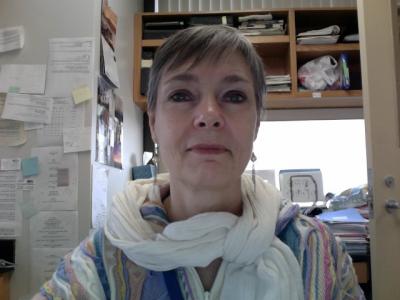Novel target found for chemotherapy-resistant leukemia cells

This is Nora Heisterkamp, Ph.D. Credit: Children's Hospital Los Angeles
Nora Heisterkamp, PhD, and colleagues at The Saban Research Institute of Children's Hospital Los Angeles have discovered that by targeting the B-cell activating receptor (BAFF-R), chemotherapy-resistant precursor B acute lymphoblastic leukemia cells (pre-B ALL) can be selectively killed in vivo and in vitro. Results will be published on May 13 in Molecular Cancer Therapeutics.
Acute lymphoblastic leukemia (ALL) is characterized by an excessive amount of white blood cell precursors, called B-cell lymphoblasts, in the blood and bone marrow. B-cell lineage ALL (pre-B ALL) accounts for 80 to 85% of childhood ALL. Although the cure rate has increased, further advances can only be achieved by identifying mechanisms to treat specific subsets of chemotherapy-resistant leukemia cells.
In a previous study (Leukemia, 2013), the researchers had shown that BAFF-R is expressed on pre-B ALL cells but not on their normal counterparts, making selective killing of ALL cells possible by targeting this receptor.
“We've now demonstrated that BAFF-R is a strong potential therapeutic target for treating chemotherapy-resistant leukemia cells, without damaging healthy cells,” said Heisterkamp, who is also professor of Research, Pediatrics and Pathology at the Keck School of Medicine of the University of Southern California.
Using a genetically-engineered antibody (anti-BAFF-R monoclonal antibody), Heisterkamp and colleagues have demonstrated that the BAFF-R could be successfully blocked in a dose-dependent manner. Inhibition of BAFF-R function rendered leukemia cells less viable in mouse models of the disease. Also, the presence of this antibody on the pre-B ALL cells resulted in increased killing of the cancer cells by natural killer (NK) cells and macrophages.
“We found that human pre-B ALL cells could be even further reduced when the anti-BAFF-R antibody was combined with chemotherapy or another therapeutic agent,” said Heisterkamp. “We are looking at a potential one, two punch.” Heisterkamp and her colleagues will continue to evaluate the use of this antibody for the treatment of ALL.
Co-authors include Reshmi Parameswaran, Min Lim, Fei Fei, Hisham Abdel-Azim, Anna Arutyunyan, Isabelle Schiffer, John Groffen, of The Saban Research Institute of Children's Hospital Los Angeles; and Margaret E. McLaughlin, Hermann Gram, Heather Huet, of Novartis Institute for Biomedical Research.
Funding for this research came from National Institutes of Health grants PHS CA090321, CA 172040, Alex's Lemonade Stand Foundation for Childhood Cancer, the V-Foundation for Cancer Research and Novartis Pharmaceuticals.
About Children's Hospital Los Angeles
Children's Hospital Los Angeles has been named the best children's hospital in California and among the top five in the nation for clinical excellence with its selection to the prestigious US News & World Report Honor Roll. Children's Hospital is home to The Saban Research Institute, one of the largest and most productive pediatric research facilities in the United States, is one of America's premier teaching hospitals and has been affiliated with the Keck School of Medicine of the University of Southern California since 1932.
For more information, visit http://www.CHLA.org. Follow us on Twitter, Facebook, YouTube and LinkedIn, or visit our blog: http://www.WeTreatKidsBetter.org.
Media Contact: Ellin Kavanagh, ekavanagh@chla.usc.edu (323) 361-8505
Media Contact
All latest news from the category: Health and Medicine
This subject area encompasses research and studies in the field of human medicine.
Among the wide-ranging list of topics covered here are anesthesiology, anatomy, surgery, human genetics, hygiene and environmental medicine, internal medicine, neurology, pharmacology, physiology, urology and dental medicine.
Newest articles

Skyrmions move at record speeds
… a step towards the computing of the future. An international research team led by scientists from the CNRS1 has discovered that the magnetic nanobubbles2 known as skyrmions can be…

A flexible and efficient DC power converter for sustainable-energy microgrids
A new DC-DC power converter is superior to previous designs and paves the way for more efficient, reliable and sustainable energy storage and conversion solutions. The Kobe University development can…

Technical Trials for Easing the (Cosmological) Tension
A new study sorts through models attempting to solve one of the major challenges of contemporary cosmic science, the measurement of its expansion. Thanks to the dizzying growth of cosmic…





















